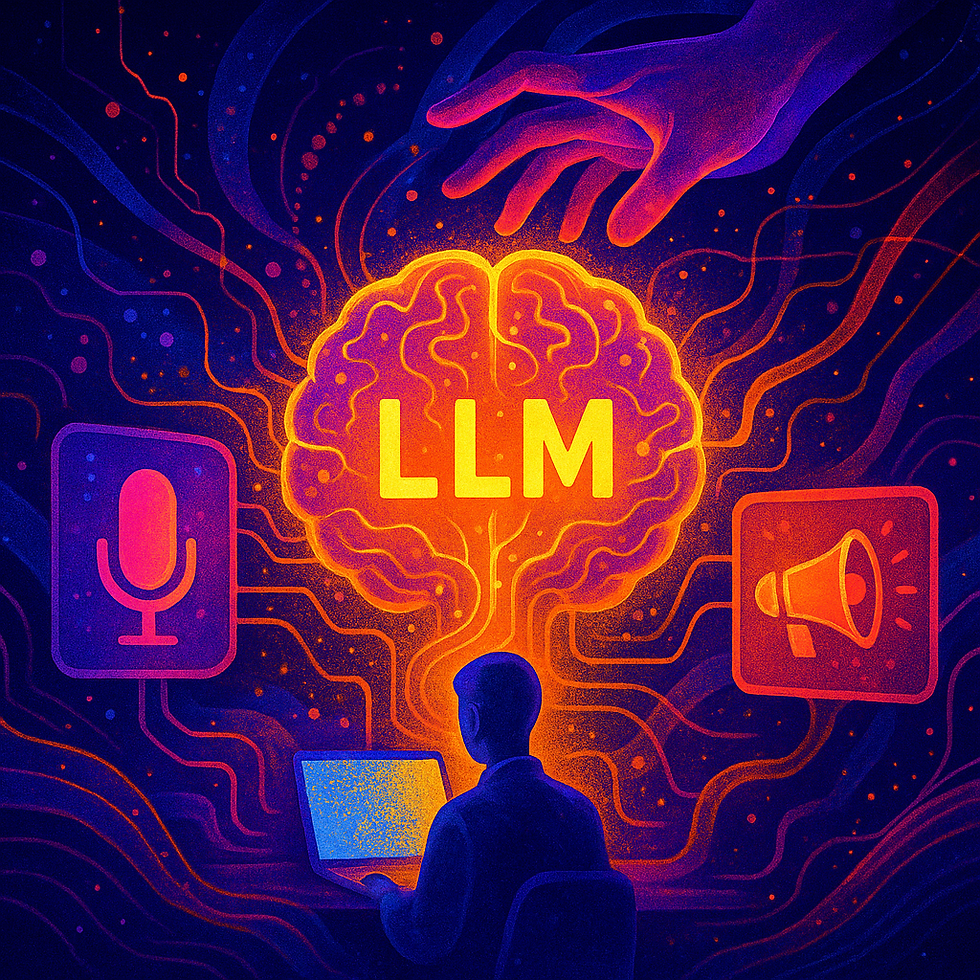
AI & UXR, CHAT GPT, OPEN AI
How to Work With Complex Prompts in AI: Structured Strategies and Best Practices
2
MIN
Mar 11, 2025
Prompt complexity plays a crucial role when working with AI-powered language models like ChatGPT. However, in practice, not all inputs lead directly to the desired results. Particularly with prompt writing, the end result depends heavily on the clarity and structure of the input. This is comparable to giving instructions to a very clever but sometimes somewhat idiosyncratic teenager who really wants to please 😉 Without clear guidance, misunderstandings and loss of detail can occur. In this article, you will learn how to use prompt length and structure to achieve better results.
Why complex prompts are a challenge for AI
Complex prompts are not only challenging for the person formulating them, but also for the AI processing them. A complex prompt often asks multiple questions, expects detailed answers, and requires the AI to link different aspects. While ChatGPT is powerful, it reaches its limits when the information is too extensive or complex in one go.
Solution: More precise results can be achieved by deliberately reducing prompt complexity or by structuring your questions clearly.
Strategies for reducing prompt complexity
1. Take it step by step
Work iteratively: Start with a rough framework and refine the queries step by step. Instead of asking for all the information at once, you could divide the queries into smaller steps, for example when creating an agenda or a project plan. Small feedback loops are very helpful to ensure that the answers are going in the right direction.
2. Focused formulation
Try to limit the number of main questions in a prompt to a maximum of two or three. Multiple questions or too many conditions in a prompt can easily cause the AI to lose focus. The more precise you are in your wording and the simpler the sentence structure, the more likely you are to get the AI to prioritise correctly.
3. Structure through checklists and outlines
Use checklists or structured templates when you expect a multi-level result. By setting clear expectations about the objective and format of the response – be it a report, a list, or a detailed analysis – you create a structured framework that the AI can easily adapt. Consistently using the same outline or question form is particularly useful if you are having an ongoing discussion.
4. Set clear expectations
Be specific about the type of answer you want: Do you want a rough summary or a detailed plan of action? This specification can help ChatGPT to better tailor the depth of the answer to your objectives.
Examples of different levels of complexity
Here are five levels to illustrate how a prompt can be enhanced:
Level 1: ‘Make a list of ideas for a team-building event.’
Level 2: ‘Make a list of indoor team-building activities that strengthen collaboration.’
Level 3: ‘List five team-building activities for virtual teams with a short description and the tools needed.’
Step 4: ‘Create a full-day workshop agenda on the topic “Collaboration in hybrid teams” with times and descriptions of the proceedings.’
Step 5: ‘Create a detailed plan for a two-day, four-hour training course on “Digital Project Management” for a hybrid team, including an agenda, materials and exercises.’
For step 5, a step-by-step approach would be the most efficient strategy.
Dimensions of prompt complexity
A prompt becomes more complex due to various factors. Here are 20 dimensions of prompt complexity that you should be aware of:
Number of questions or tasks (+20%)
Level of detail of the requirement (+15%)
Interconnectedness of information (+15%)
Multilevel nature and dependencies (+20 %)
Necessity for creative solutions (+10 %)
Specific target group requirements (+10 %)
Required structure and formatting (+10 %)
Consideration of different framework conditions (+15 %)
Integration of several concepts or disciplines (+15 %)
Requirements in terms of timing and duration (+10 %)
Number of perspectives or roles required (+10 %)
Multilingualism (+15 %)
Comparative analysis (+15 %)
Consideration of variables and scenarios (+15 %)
Expectation of forecasts or speculations (+10 %)
Interdisciplinary approaches and methods (+15 %)
Requirements for feedback integration (+10 %)
Integration of empirical data or sources (+15%)
Consideration of ethical or legal aspects (+10%)
Goal definition with strategic focus (+10%)
Note: ChatGPT and I developed the dimensions and weightings recursively to provide a rough idea of how prompt complexity is achieved.
Maximum complexity: The sum of these weighted dimensions helps to estimate how complex a prompt will be overall. When the added complexity reaches about 100–120%, this is the recommended upper limit for prompts that ChatGPT can still answer in a structured and detailed way in one step. If the request exceeds this threshold, a step-by-step approach is advisable. This way, the AI can address individual aspects in a targeted manner, and the entire process becomes more transparent and productive.
Strategies for processing large amounts of data
Segmentation & contextualisation: Break content down into sections and focus on one relevant part per prompt. This way, the context remains clear and the processing remains focused on the essential content.
Summaries & keywords: Emphasise the most important points and make it easier for the AI to process data. This gives ChatGPT a clear orientation of what is particularly important in the prompt without having to process all of the content at once.
Visual structures & tables: Tables or diagrams can present complex data more easily. Visual formatting often makes it easier for ChatGPT to process.
‘Focus Mode’ for targeted analysis: Clear instructions such as ‘Please only consider the main arguments’ help to focus the AI.
Conclusion
The right prompt length and structuring determine how well ChatGPT can handle complex requests. With the prompt writing strategies presented here, you can ensure that your requests are processed accurately and effectively. Test different approaches, iterate, and see which structure works best for your specific needs!
RELATED ARTICLES YOU MIGHT ENJOY
AUTHOR
Tara Bosenick
Tara has been active as a UX specialist since 1999 and has helped to establish and shape the industry in Germany on the agency side. She specialises in the development of new UX methods, the quantification of UX and the introduction of UX in companies.
At the same time, she has always been interested in developing a corporate culture in her companies that is as ‘cool’ as possible, in which fun, performance, team spirit and customer success are interlinked. She has therefore been supporting managers and companies on the path to more New Work / agility and a better employee experience for several years.
She is one of the leading voices in the UX, CX and Employee Experience industry.











.png)









